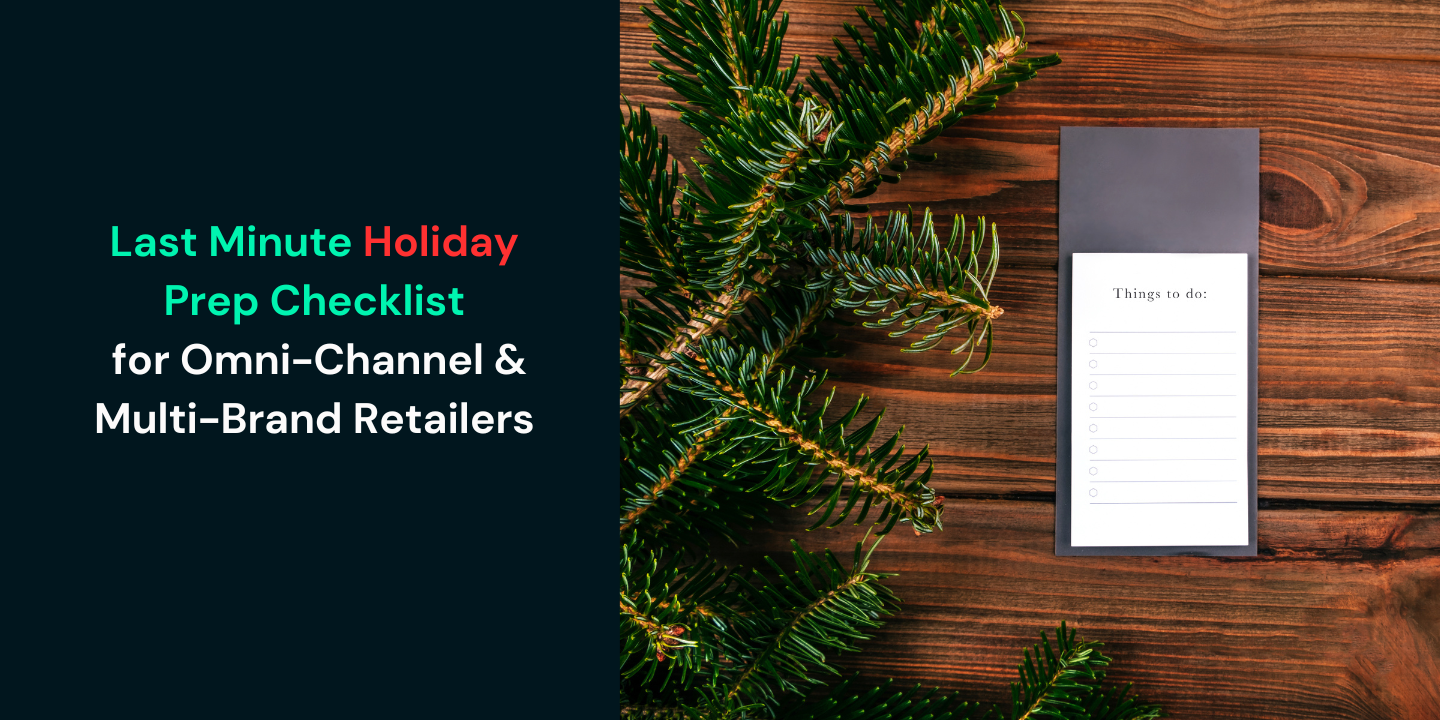Why (and How) to Connect Your Online and In-Store Sales

Lately, the talk of the retail world is how brick and mortar stores are dying. But are they really? According to a BigCommerce study, 96% of Americans shop online - but 64% of Americans’ shopping budget is still spent in-store. People are choosing to shop online because they can browse from bed, the couch or the office. But they may find themselves held up in certain situations by the inability to try products on, high shipping costs, difficult return processes, or privacy concerns - not to mention having to wait 4-7 business days to receive their purchases. Knowing that most customers are doing a combination of online and brick and mortar shopping, it’s vital for retailers who sell across both channels to connect their online and in-store efforts to provide a better customer experience - and better understand customer behavior.
The benefits
Connecting your ecommerce and brick and mortar data allows you to close the loop between online and offline sales and better understand your customers by having more comprehensive insight into their behavior:
- What products they’re buying
- What channels they're shopping through
- What discounts they're using
- What ad or email campaigns they're interacting with
It gives you the opportunity to better compare and contrast these buying behaviors and develop customer personas to target with marketing efforts. It also helps you better serve your customers - if they have one all-encompassing profile of their interactions with your store, it's a lot easier to track their orders, provide effective customer service and engage with them in a more personalized way. And on the most basic level, it lets you more accurately track your total orders and revenue - ideally in one place.
How to close the loop between online and offline
The easiest way to connect your online and offline sales? Simple: ask customers for their email address at checkout both online and in-store. This allows you connect all of a customers’ purchases - regardless of where they're made - and start creating a single record for each of your customers. With a good CRM or analytics solution (or both), you'll be able to start tracking more data more accurately on a customer level.
Pro tip: If you're already collecting email to link customers in-store and offline, you can connect your ecommerce platform and your point-of-sale platform in Glew to get a holistic view of your customers, their behavior and performance, including purchases, revenue, average order value, refunds, discounts, location, loyalty program usage and more. Learn more about customer analytics in Glew.
Collecting email to close the loop also opens up a ton of new possibilities for marketing, ongoing customer communications and brand-building. You can start sending follow-up emails asking customers to rate the products they purchased and their experience. Since consumers who shop online typically read reviews before making the decision to buy, star ratings and testimonials from other shoppers will go a long way. You can also start developing an email marketing strategy for your existing customers - sending them emails recommending related products, offering exclusive deals and more.
Pro tip: Glew lets you segment your customers into pre-built or custom segments - and then push those segments automatically to your email provider as a targeted list, making it easy to develop a successful email marketing strategy. Some examples? Recent purchasers, repeat customers, value shoppers, big spenders, frequent refunders, or at risk customers.
How popular companies are doing it
Three big companies are trying innovative ways to connect their online and in-store sales: Rent the Runway, Nordstrom, and Amazon. Rent the Runway, a designer clothing rental company, started entirely online. After growing its digital presence, it opened brick and mortar stores in a few select cities. When you enter the store, you immediately sign in to your account, which gives the stylists on staff complete access to your rental history and all your favorited pieces. The stylists can use this information to suggest outfits based on your taste, accessories to complement them, and give you a prepaid, pre-addressed box to return the items, if you don't want to return them in-person. They use a combination of handheld scanning technology, iPads and in-house software to make this work.
Nordstrom, on the other hand, recently opened a store in Los Angeles that contains no merchandise. Instead, it has a nail salon, bar, a tailor, and plenty of dressing rooms. You can consult in-person with a stylist and have clothes ordered online sent to the store, where you can try them on, get them altered, and get suggestions about other outfits you might like. The company plans to open more no-inventory stores in Los Angeles and New York.
Finally (of course), there’s Amazon. The ecommerce giant bought premium grocery retailer Whole Foods in 2017 and began selling some products, such as the Echo and Dot Bluet0oth-enabled speakers, in brick and mortar stores. They also feature Whole Foods products on the Amazon website. Both practices led to a boost in sales. These examples are evidence that physical stores aren’t dying - their roles are just shifting to offer a more personalized experience. For stores that do it right, brick and mortar can be a meaningful component of your retail strategy - and a complement to your online experience. Just make sure you're closing the loop between your online and offline sales so you can accurately track your orders, better understand your shoppers' behavior and create more meaningful customer profiles using data from all your channels.
Learn more
Want to learn more about multichannel analytics? Check out our guide on how to decide on multichannel analytics - we'll go over all the options for enterprise multichannel analytics and the impact they'll have on your time, your resources and your money.




